Iconic NY Rangers

Iconic NY Rangers
Bill Cook
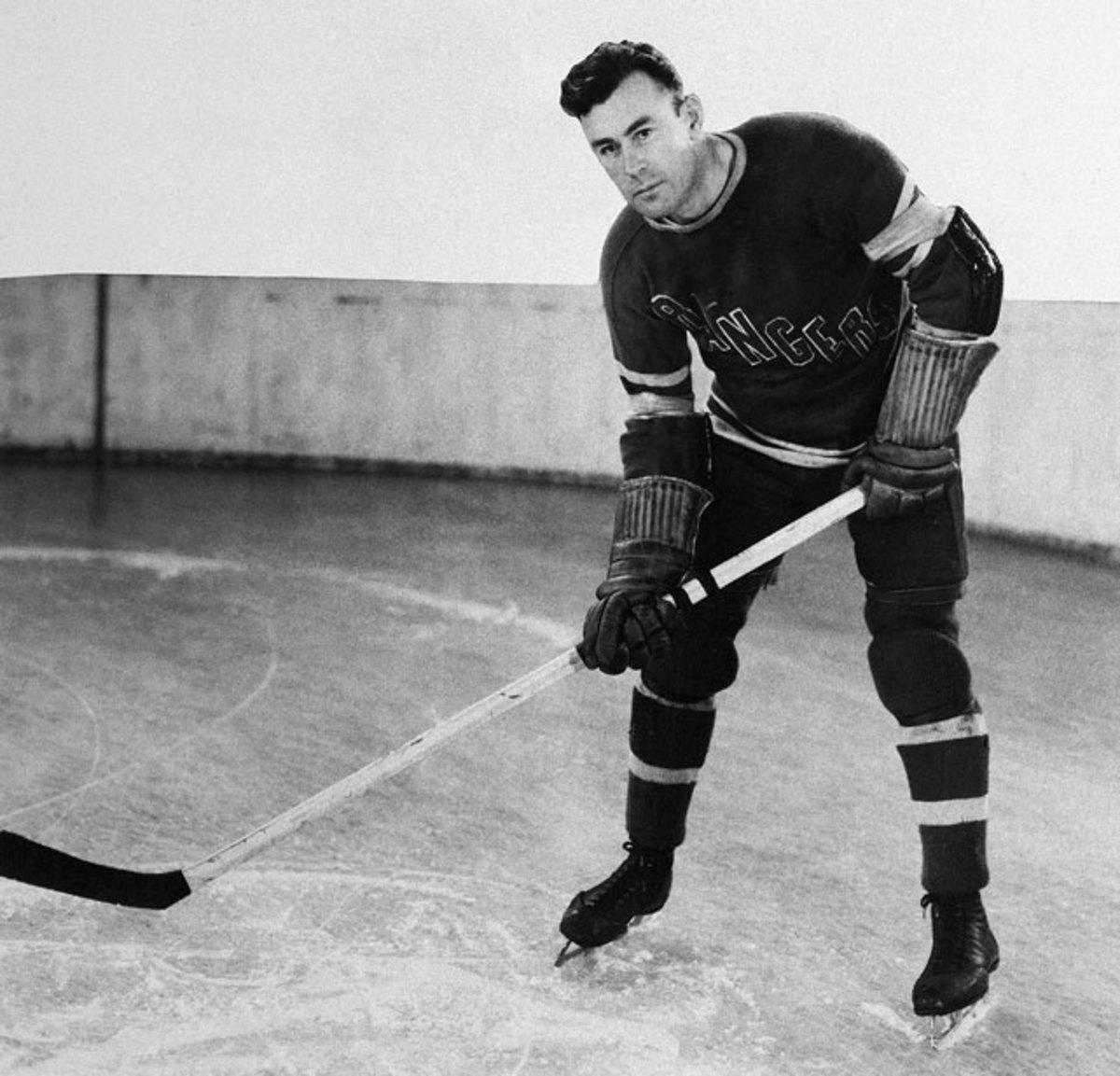
Inducted into the Hockey Hall of Fame in 1952, Cook played his entire NHL career with New York. He was the first player signed by the Rangers and their first captain, joining his brother, Bun, on the club in 1926 and leading it to its first two Stanley Cups (1928, '33). He topped the Rangers in goals six times, was NHL scoring champion twice, wore the C from 1926 to 1937, and later coached New York for two seasons. He did all this after spending two years with the Canadian Field Artillery during World War I and later serving in Siberia as part of a subsequent Allied intervention in the Russian Civil War.
Harry Howell
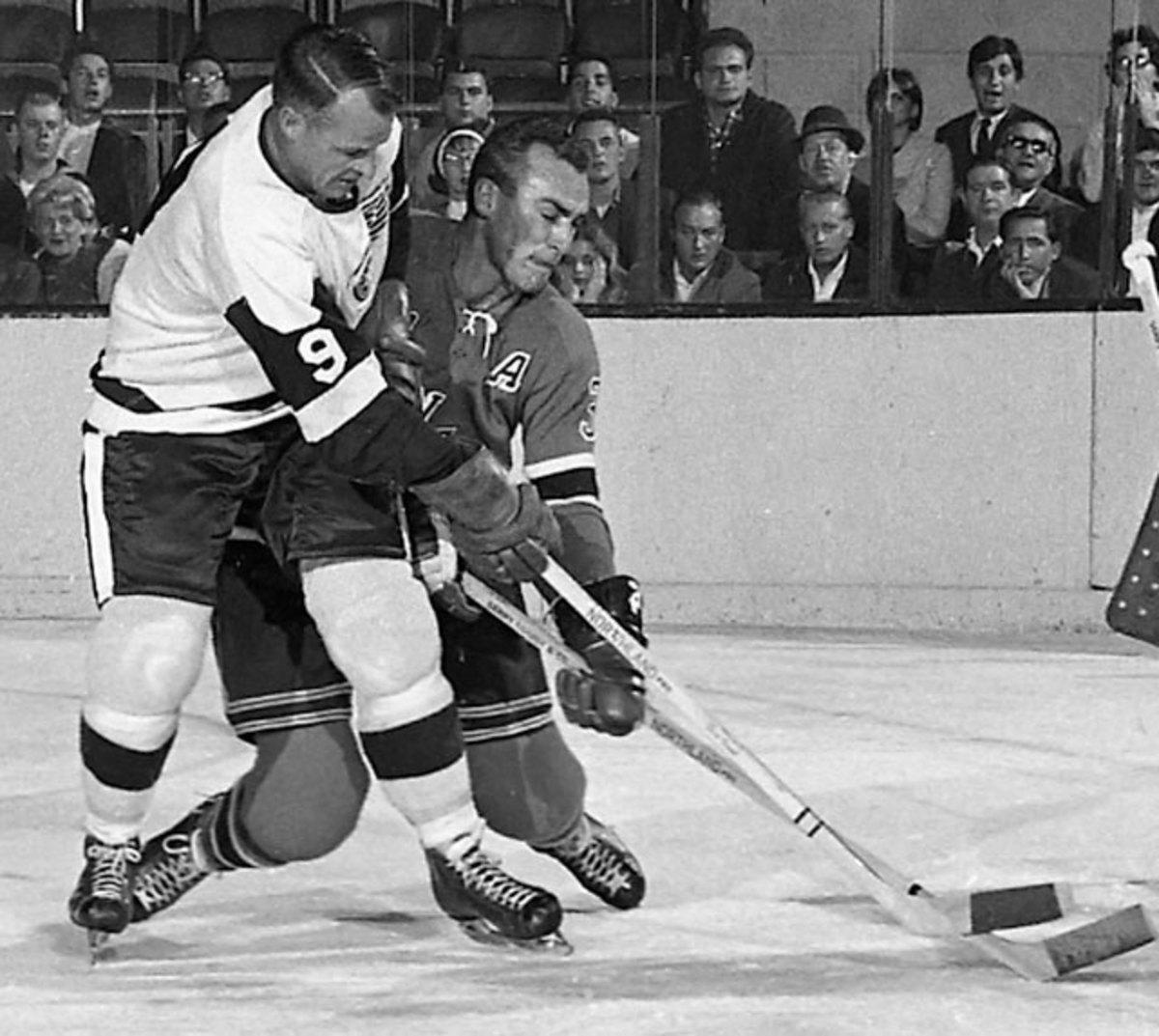
No player has appeared in more games wearing a Rangers jersey than Howell (1,160). He was always considered among the game's steadiest defensemen during an era when the Blueshirts usually lost more games than they won. In 1967, his consistently strong play was finally rewarded with the Norris Trophy, considered by some to be a lifetime achievement award as much as an honor for his play that season. Howell entered the Hall of Fame in 1979 and had his No. 3 retired by the Rangers in 2009.
Andy Bathgate
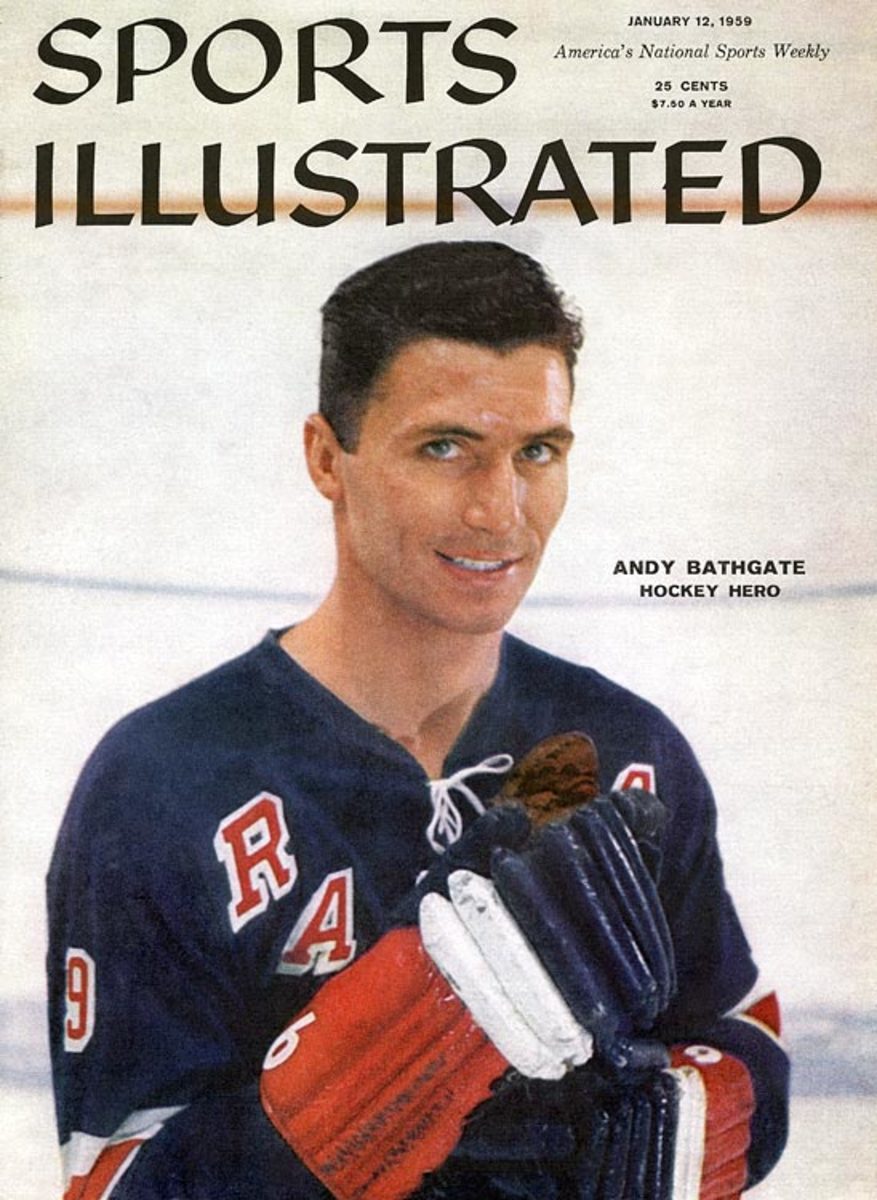
An eight-time All-Star and Ranger for 12 years, Bathgate stands fourth in franchise history in goals (272), assists (457) and points(729) and is second only to Rod Gilbert with 268 tallies at even strength. He racked up 40 goals in 1958-59 and won the Hart Trophy as NHL MVP. After entering the Hockey Hall of Fame in 1978, Bathgate joined Adam Graves in 2009 as Rangers who have had their No. 9 retired.
Camille Henry
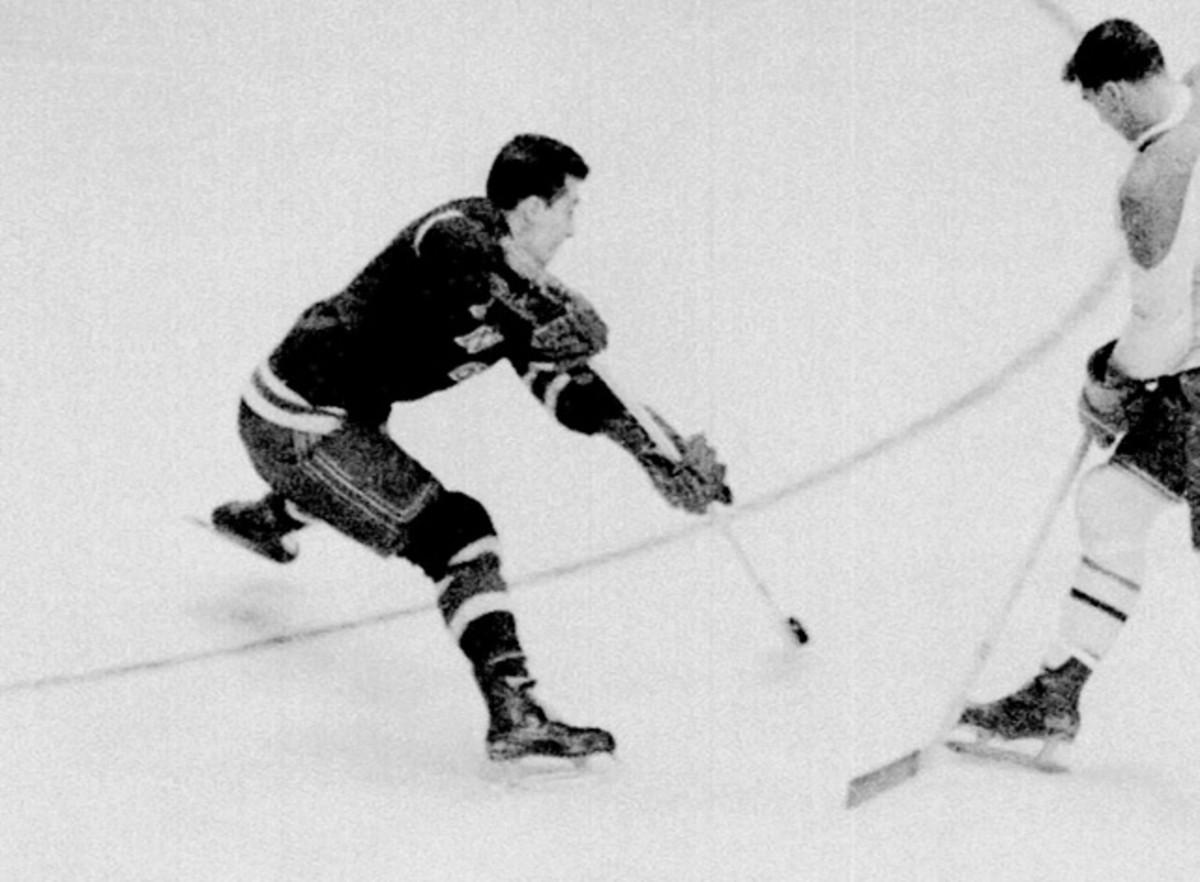
A three-time All-Star, Henry produced eight 20-goal seasons during the 1950s and 60s with the Rangers and served as captain after Andy Bathgate was traded in 1964. Henry always played above and beyond his size (5'7", 152 pounds), which was tiny even by the standards of the day. He won the Calder Trophy as rookie of the year for 1953-54, and the Lady Byng Trophy in 1957-58.
Rod Gilbert
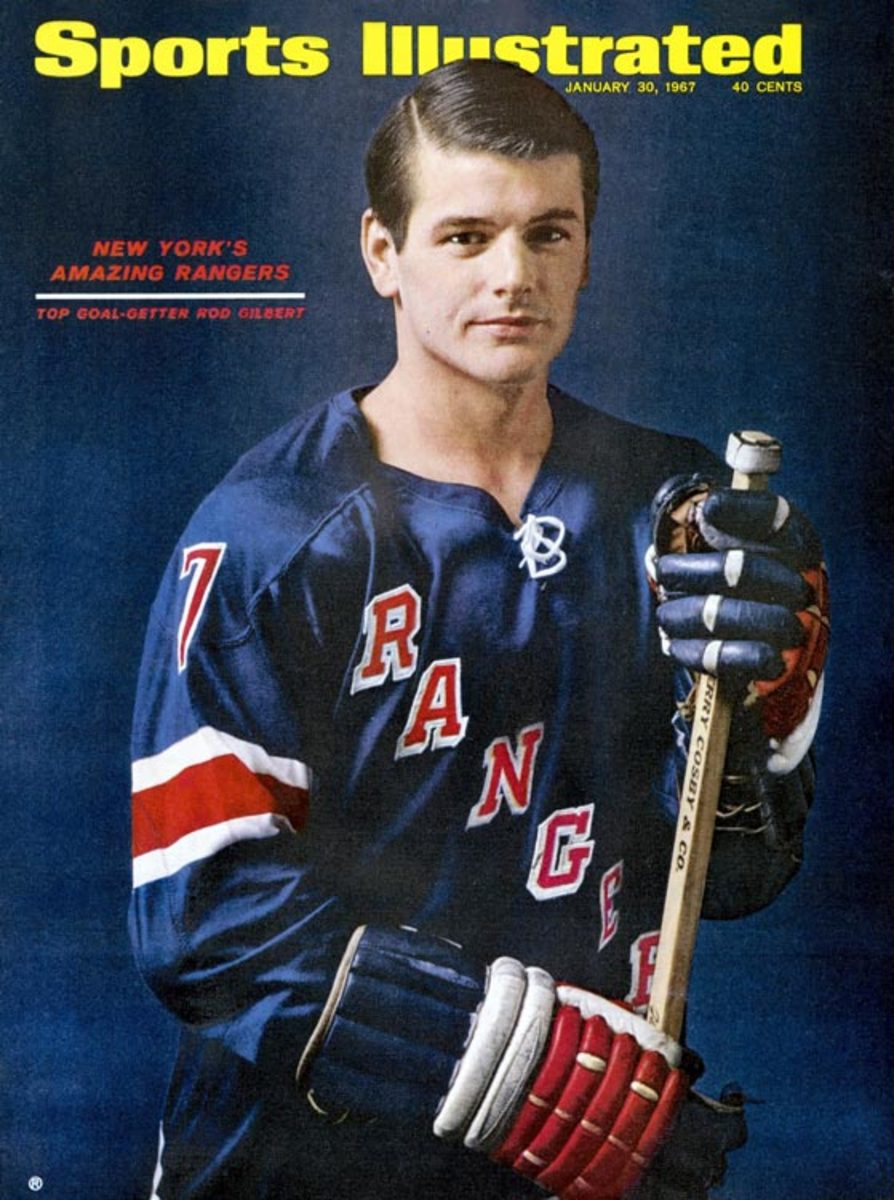
The club's all-time leader in goals (406), power-play tallies (108) and game-winners (50), and the only player in franchise history to top 1,000 points as a Ranger (1,021), Gilbert was always a fan favorite during his 16 seasons on Broadway (1962-78). An eight-time All-Star, and the winner of the 1975-76 Masterton Trophy for perseverance and dedication to hockey, he had his number 7 hung from the rafters at Madison Square Garden in 1979 and was inducted into the Hockey Hall of Fame in 1982.
Jean Ratelle
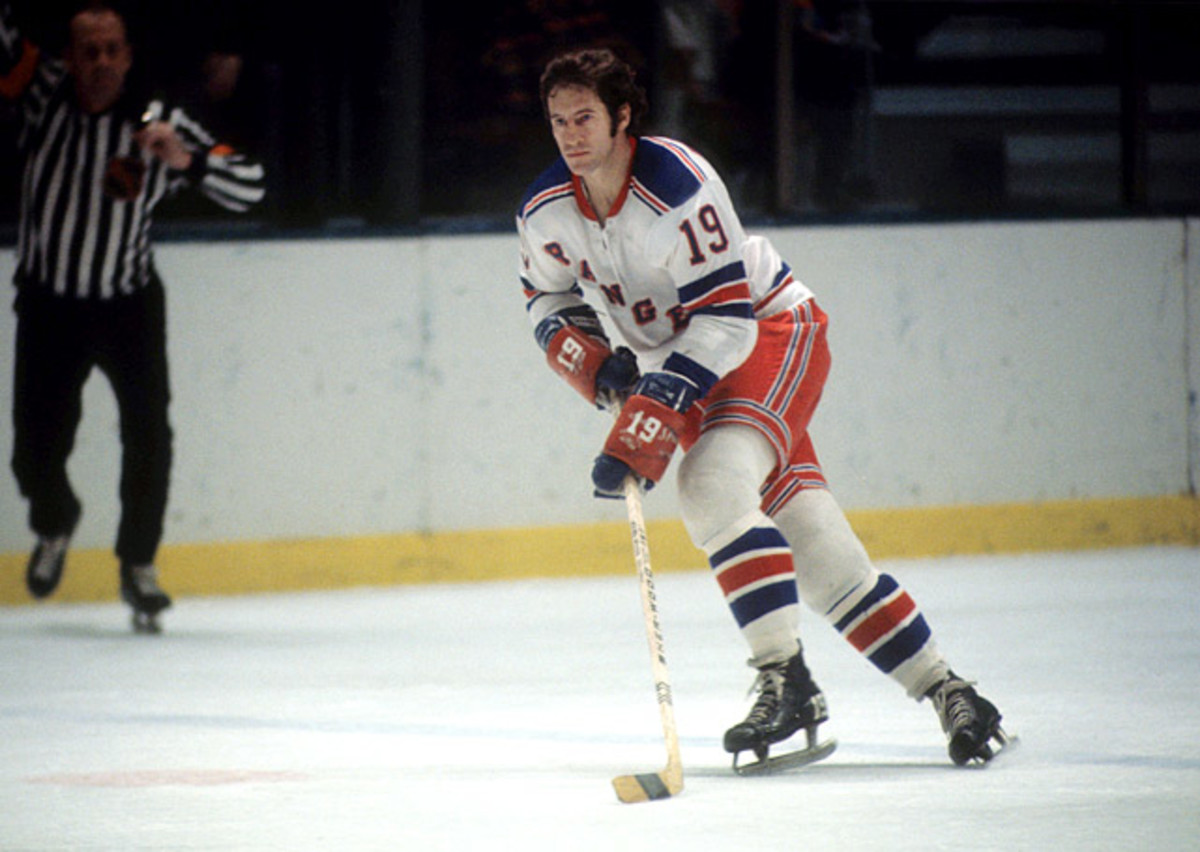
The man known as Gentleman Jean was as good a playmaking center as anyone in his era and he thrived at a time when non-physical players like him were targets for abuse. Ratelle, a Blueshirt for 14 full seasons, stands second in Rangers history in goals (336) and third in assists (481) and points (817). He was the centerpiece of the team's famed GAG (goal-a-game) line with Vic Hadfield and Rod Gilbert, and won the Masterton (1971) and Lady Byng (1972, '76) trophies as a Ranger. He was inducted into the Hockey Hall of Fame in 1985.
Vic Hadfield
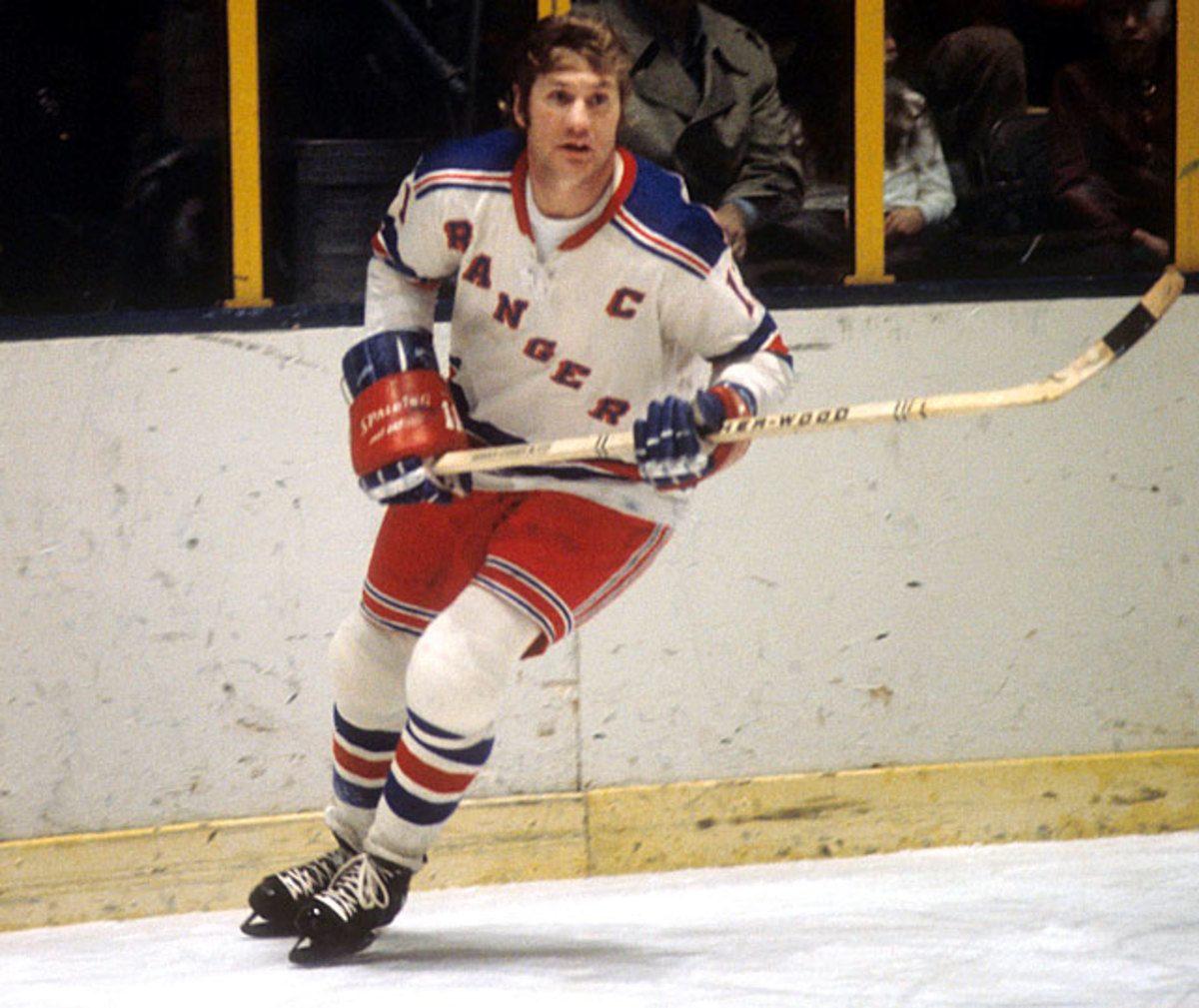
If someone asks which player who wore number 11 as a Ranger once scored 50 goals for them in a season, the answer is not Mark Messier. It's Hadfield, who served as team captain for three seasons, and notched an even 50 in 1971-72. The burly left winger scored a total of 262 during his 13 seasons with the Blueshirts and was best known as the left wing on the club's GAG (goal-a-game) line with Rod Gilbert and Jean Ratelle.
Ed Giacomin
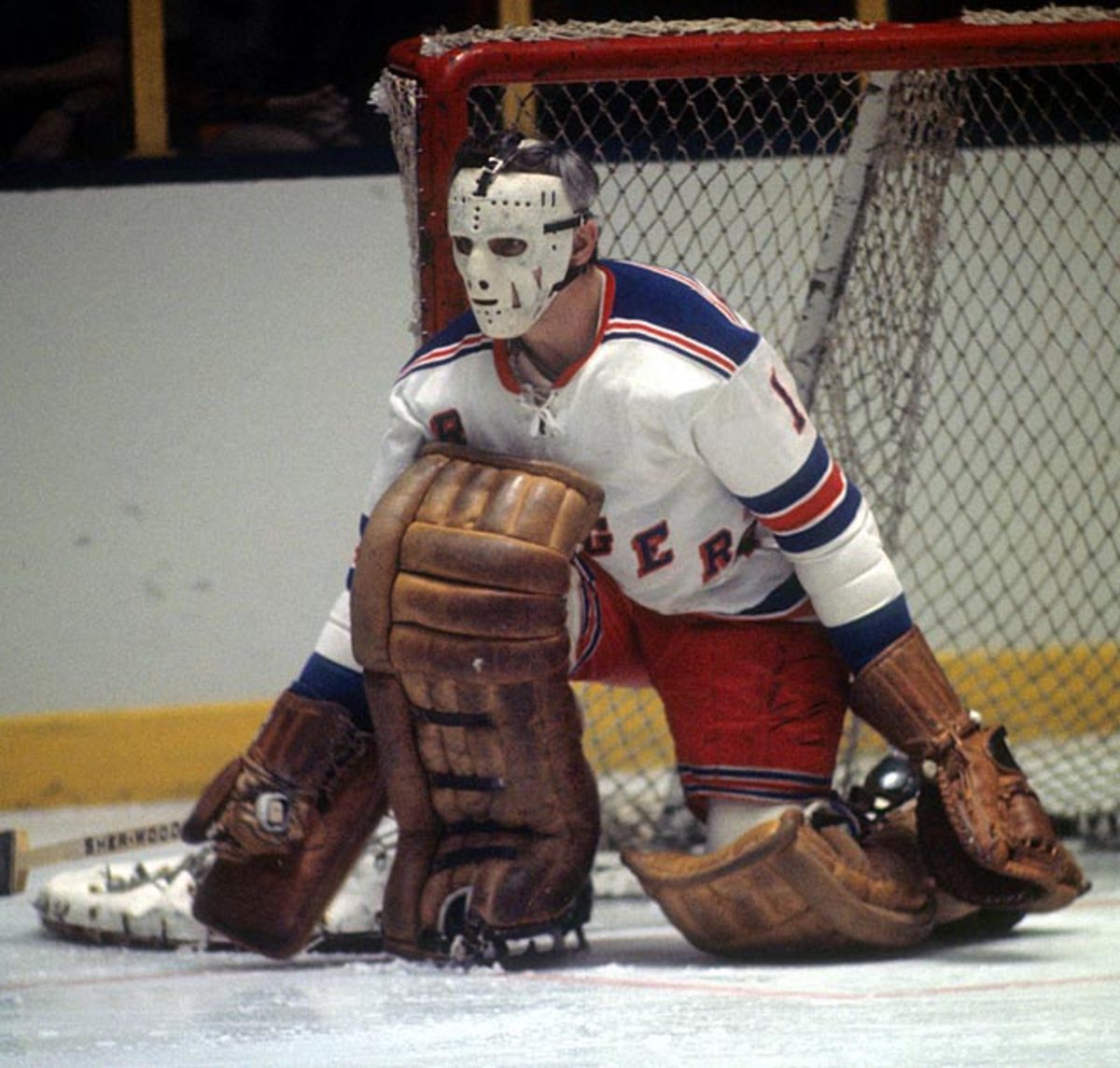
Beloved on Broadway, Giacomin won 266 games during his NHL career, the first 10 years of which were spent with New York. Until 2014, when Henrik Lundqvist recorded his 50th career shutout, Giacomin was the club's all-time leader, with 49. On October 31, 1975, he was waived and claimed by Detroit, making his Red Wings debut at Madison Square Garden two nights later. The chants of "Eddie! Eddie!" produced one of the most emotional nights in the history of the franchise. He was enshrined in the Hockey Hall of Fame in 1987 and his No. 1 hangs from the Garden rafters.
Brad Park
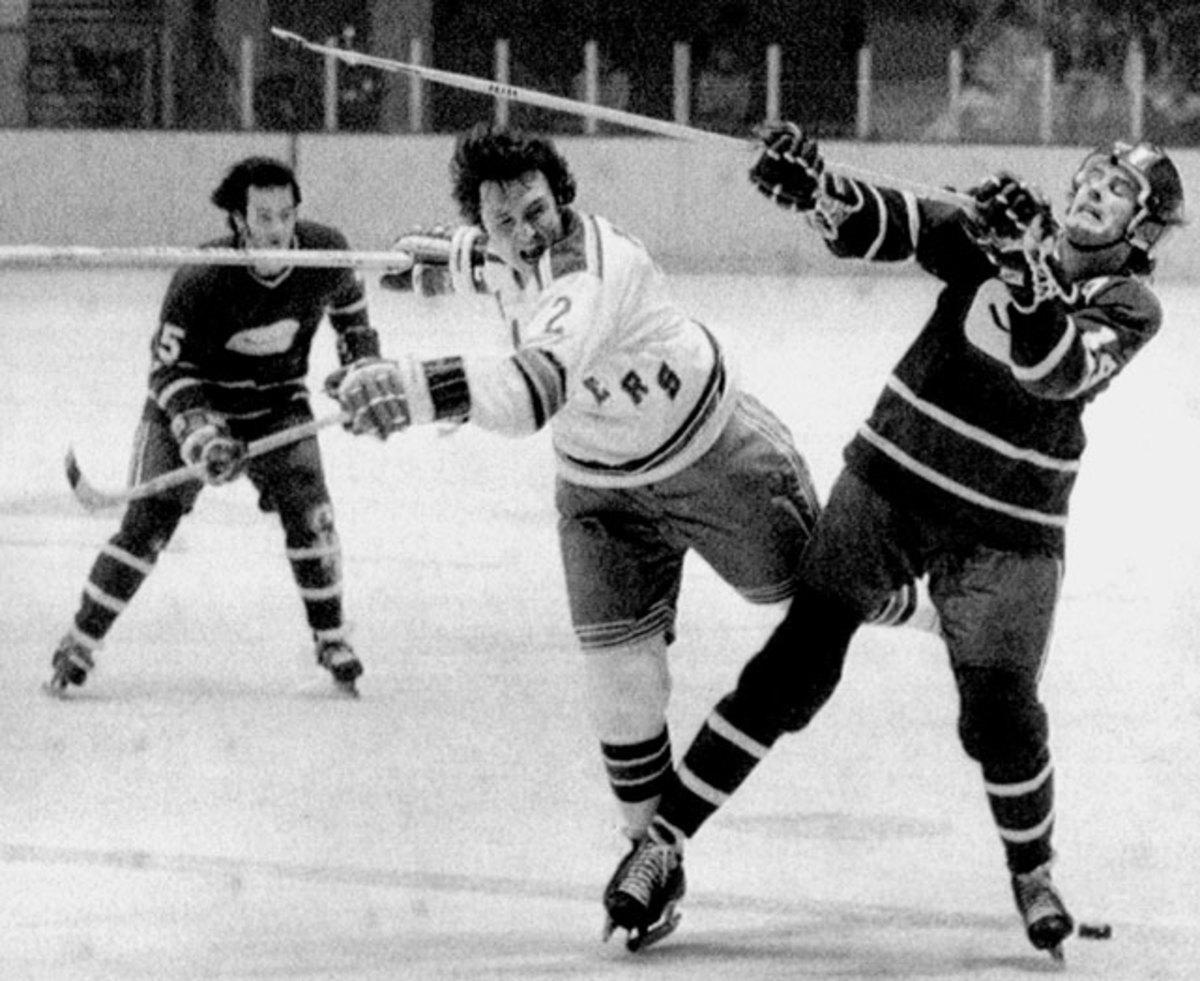
Park was the arguably the best blueliner of his era (late-1960s, early-'70s) who wasn't named Bobby Orr. He earned NHL First All-Star Team honors five times and made its second team twice. He was also runner-up for the Norris Trophy on six occasions and second only to Orr for career scoring among NHL defensemen (896 points) when he retired in 1985. During his 17-year NHL career with three different clubs, his teams never missed the playoffs. He served as Ranger captain in 1974-75, still holds the franchise mark for best plus-minus in a season (+62 in 1971-72), and was inducted into the Hall of Fame in 1988.
Phil Esposito
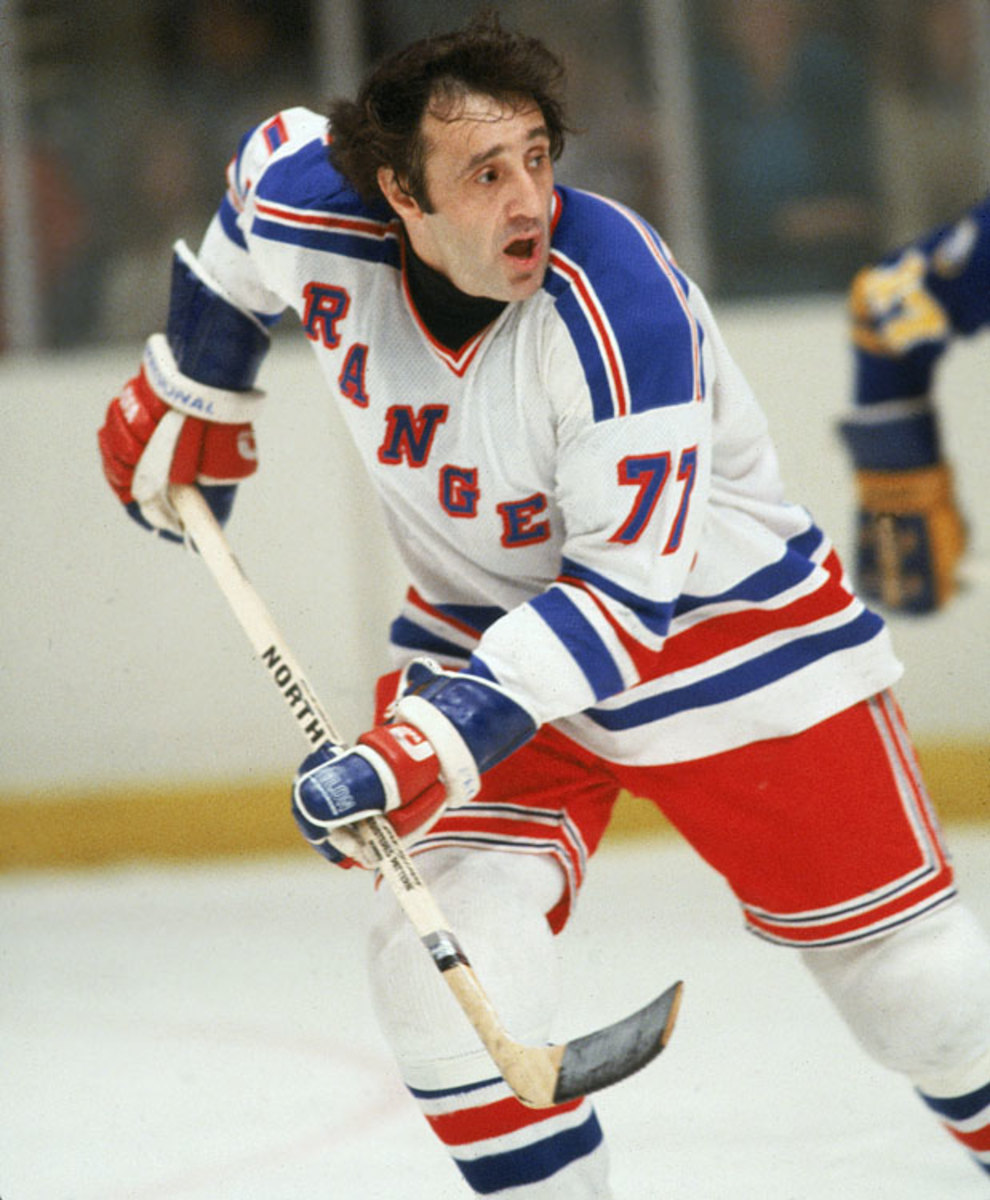
Esposito was hockey's premier goal scorer when he came to New York from Boston (with Carol Vadnais for Brad Park, Jean Ratelle and Joe Zanussi) on Nov. 7, 1975 as part of the franchise's biggest trade. Though he rued the move at the time, Espo became a Ranger fixture, leading the team to a surprise appearance in the Stanley Cup Final in 1979 and later becoming the only man in franchise history ever to serve as captain, coach and GM. He was inducted into the Hockey Hall of Fame in 1984.
John Vanbiesbrouck
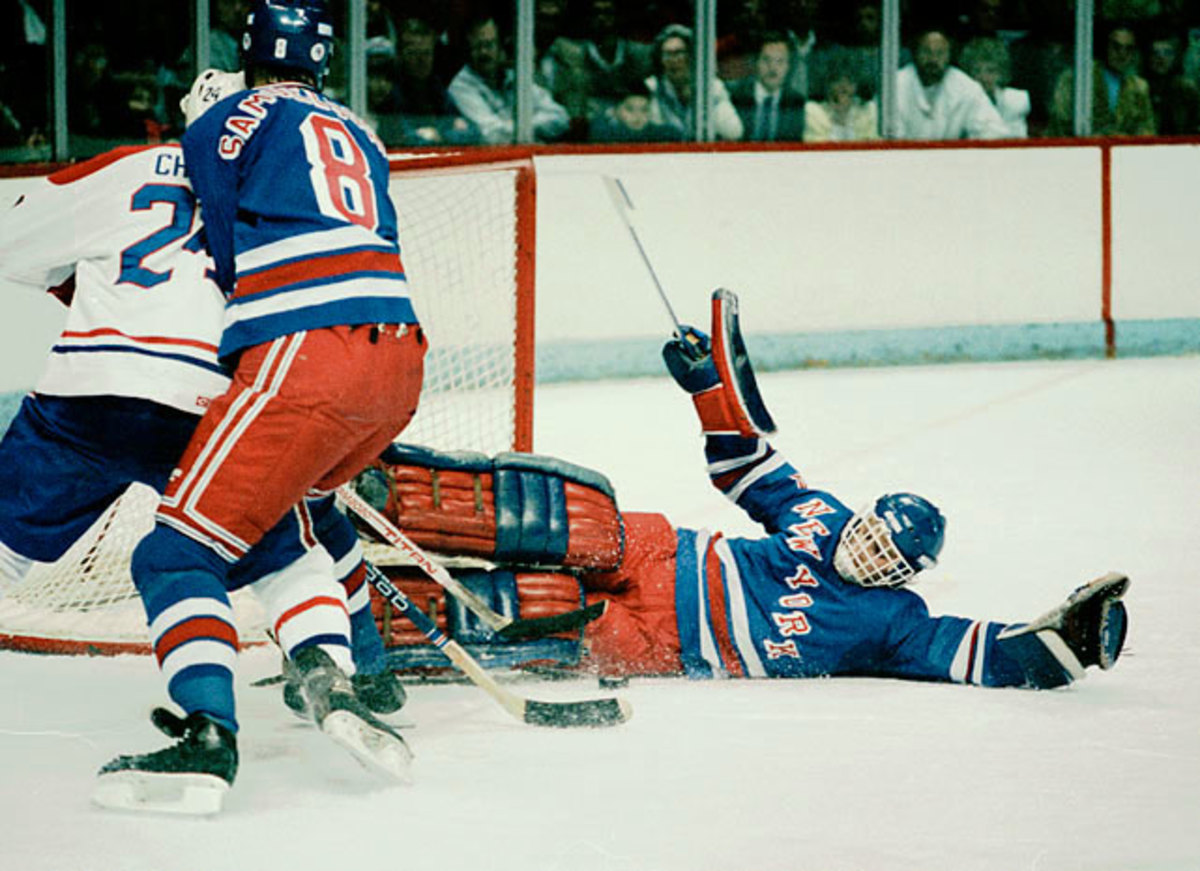
The goalie known as Beezer had a breakout Vezina Trophy-winning campaign in 1985-86 when he recorded all but five of the Rangers' 36 wins and led the team into the playoff semi-finals after upsets of rivals Philadelphia and Washington. He manned the Rangers' net for the first nine full seasons of his NHL career (1984-93), departing for Florida before New York's march to the Stanley Cup in 1994. He retired in 2002 with the most career wins, 374, of any U.S.-born goalie in league history.
Brian Leetch
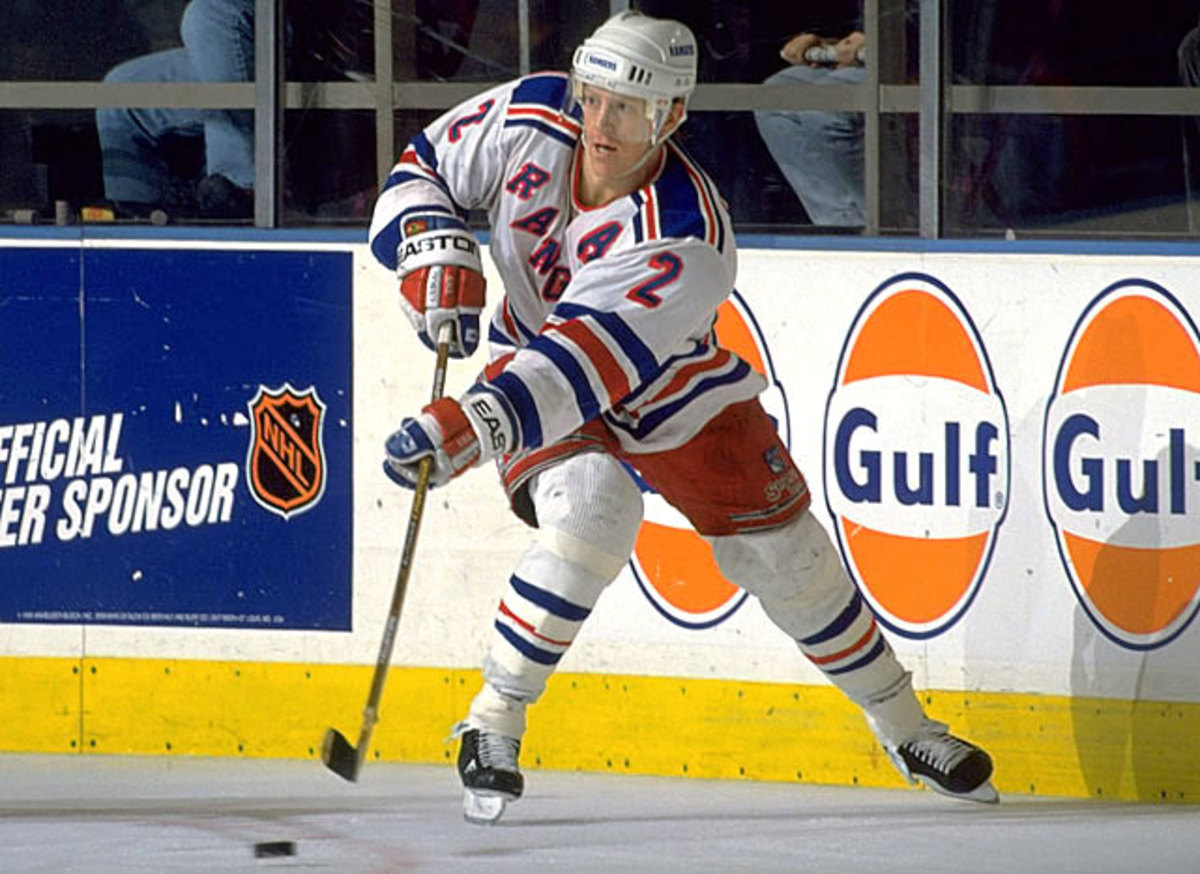
One of the finest American players, and blueliners, of all time, Leetch recorded more assists (741) than any Ranger in history and ranked second in points (981) and power-play goals (106). He served as captain from 1997 to 2000 and often saved his best performances for playoff time. During New York's epic run to the Stanley Cup in 1994, Leetch led the NHL with 34 postseason points, earning the Conn Smythe Trophy as playoff MVP, and scored the first goal in the Rangers' 3-2 win against Vancouver in Game 7 of the Cup final. The two-time Norris Trophy winner entered the Hall of Fame in 2009, a year after the Rangers retired his No. 2.
Mike Richter
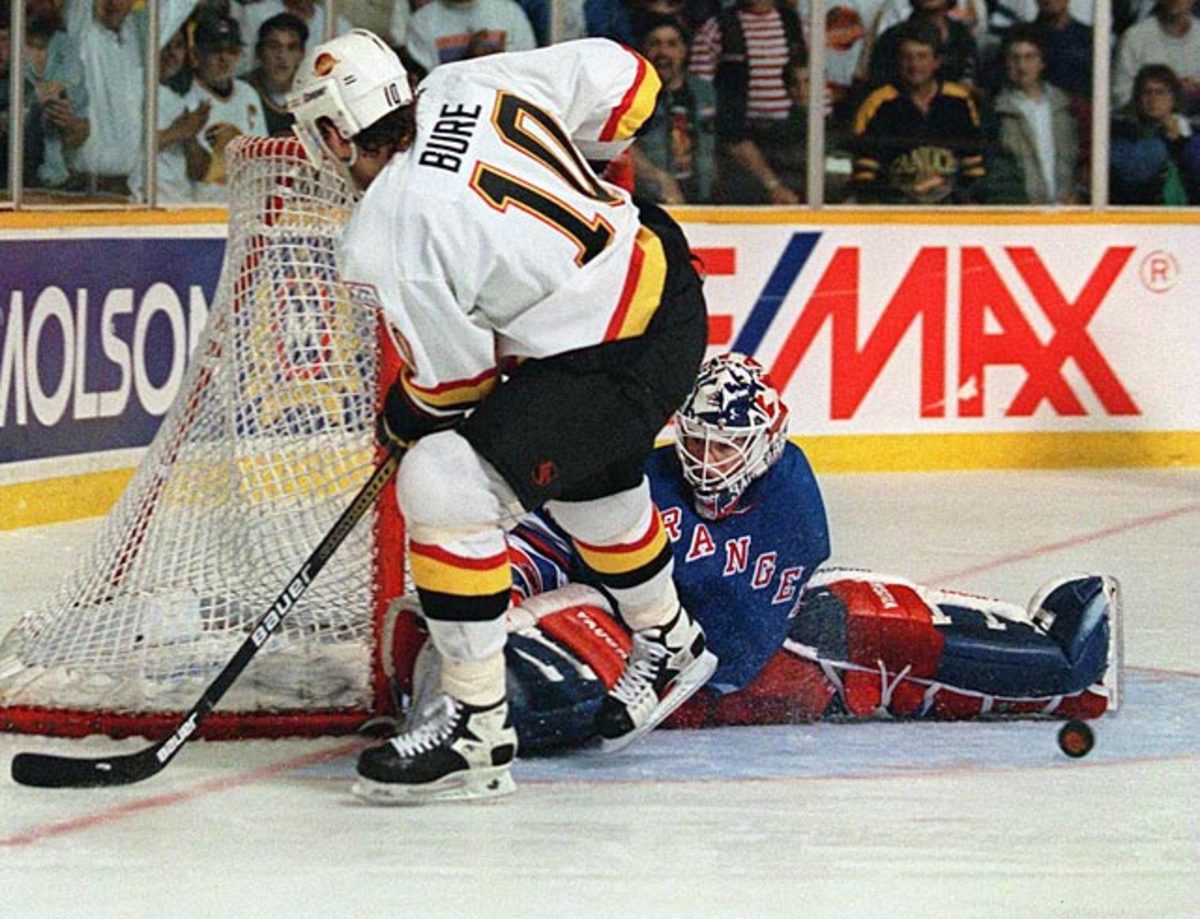
After making his NHL debut during the playoffs in 1989, Richter went on to record what was then a club record 301 wins, spending his entire 14-year career with the Rangers before concussions forced him into early retirement. He backstopped the Rangers to the Stanley Cup in 1994, and his stop on Pavel Bure's penalty shot in Game 4 remains the most famous save in franchise history. Richter also played on two Olympic teams and was MVP of both the 1994 NHL All-Star Game in Madison Square Garden and the 1996 World Cup of Hockey.
Adam Graves
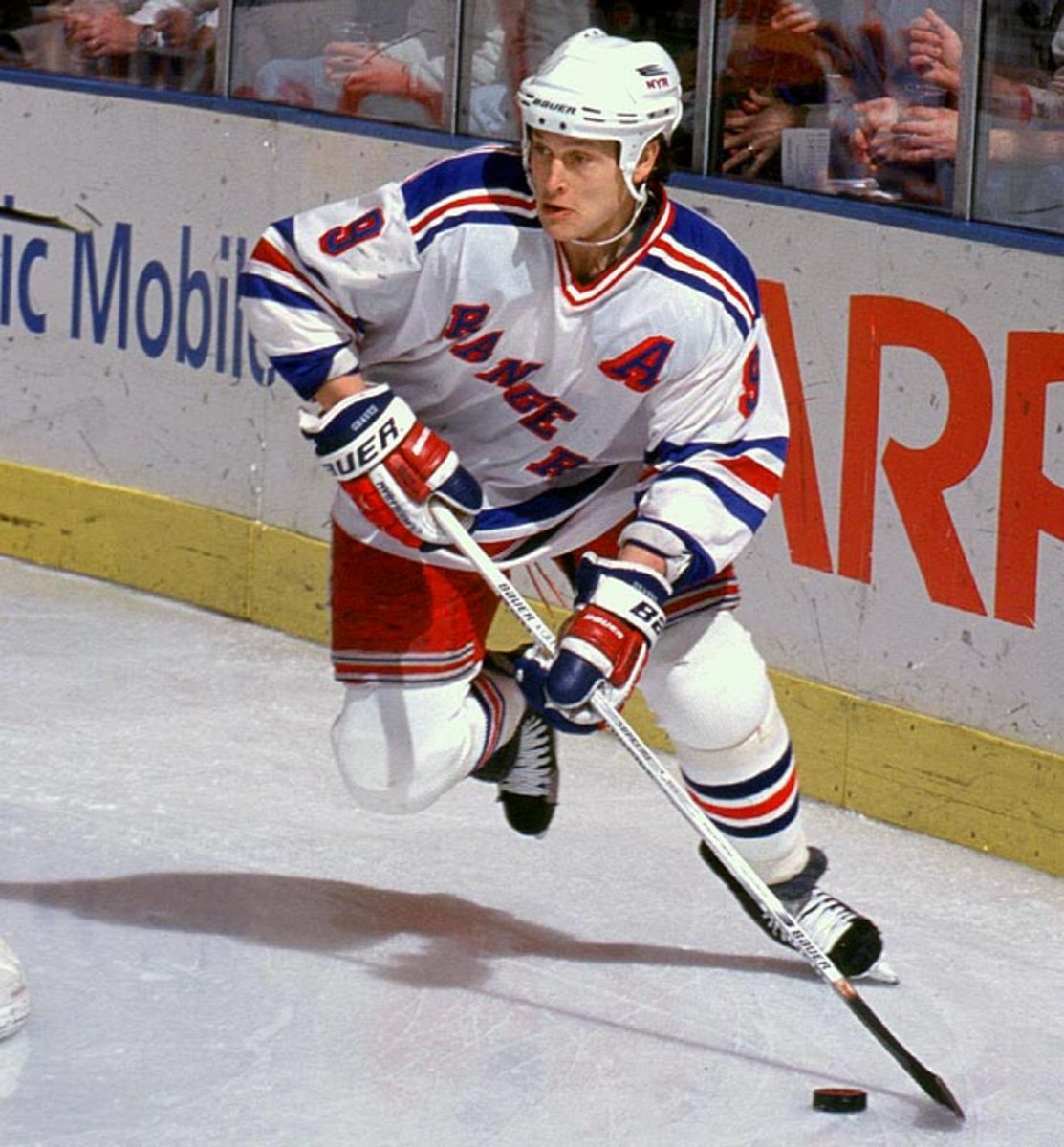
One of the most popular players ever to wear a Rangers uniform, Graves scored 52 goals during their Stanley Cup season of 1993-94, a mark that stood as the club record until Jaromir Jagr broke it in 2005-06. During his 10 seasons with New York, Graves was a respected policeman on the ice and a highly regarded community leader off it, widely recognized for his charitable works and connection to Rangers fans. During Brian Leetch's jersey retirement ceremony in 2008, the defenseman surprised Graves by announcing that the Rangers would retire his No. 9 the following season.
Mark Messier
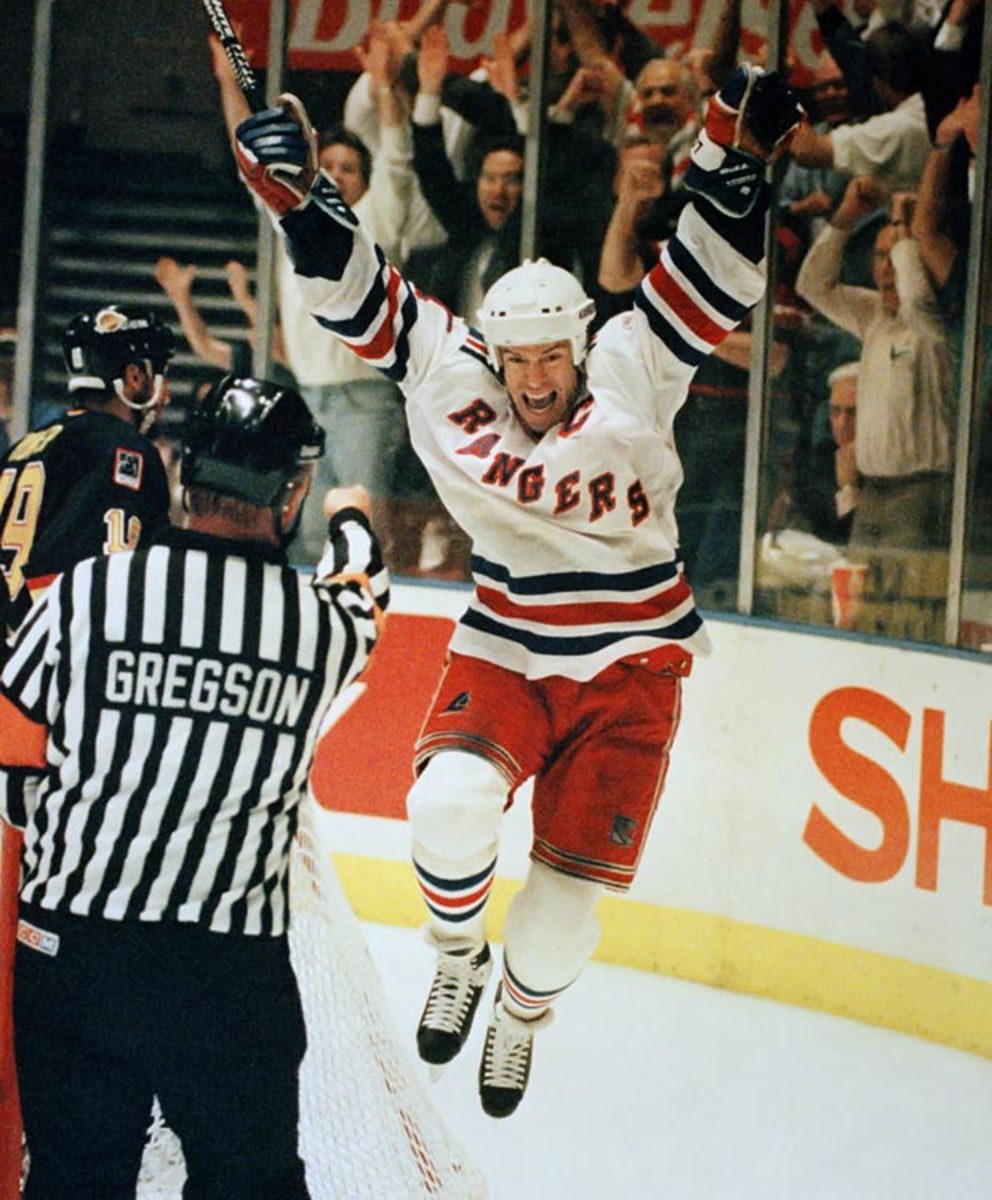
The man who promised a Stanley Cup for New York delivered it in 1994, producing a dramatic hat trick in a must-win Game 6 vs. New Jersey in the Eastern Conference Finals en route to ending New York's 54-year title drought. Messier, who hoisted five Cups with Edmonton, twice won the Hart Trophy as league MVP, including once with the New York in 1992. The Rangers retired his No. 11 in 2006 and he entered the Hockey Hall of Fame the following year.
